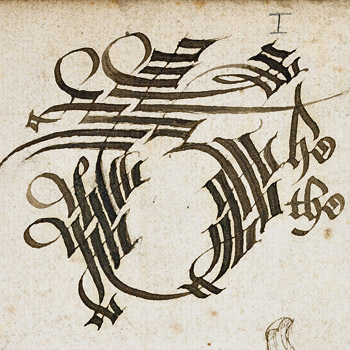Ipomadon
General Information
Plot Summary

Le Fere, the beautiful but proud heiress of Calabria, vows to marry the best knight in the world. Ipomadon, prince of Apulia, hears about her beauty and travels to Calabria with his tutor Thalamewe. Refusing to give his real name, he serves Le Fere for three years, and is known as the ‘Strange Valet’. During this time he refuses to take part in tournaments, preferring to hunt. When Le Fere, who has secretly fallen in love with him, rebukes him for his un-chivalric behaviour he leaves the court and she, regretting her pride, confesses her love to her maid Imayne. Ipomadon returns to Apulia, where his dying mother reveals that he has a half-brother and gives him a ring as a recognition token. After being knighted by his father Ipomadon travels around Europe for two years, anonymously participating in tournaments.
Meanwhile, Le Fere’s barons demand that she take a husband. She stalls, but eventually agrees to marry the winner of a three-day tournament, hoping that the Strange Valet will participate. Resolving to attend the tournament in disguise, Ipomadon has Thalamewe assemble three suits of armour in white, red and black. They travel to the court of Meleager, King of Sicily and Le Fere’s uncle, where Ipomadon requests to serve as the queen’s servant, or ‘Drew-la-Rayne’. When the Sicilian court attends the tournament, Ipomadon travels with the queen, who has also fallen in love with him. But to her annoyance and the amusement of her ladies, he declines to take up arms.
Every morning he pretends to go hunting, before changing into his armour in a deserted hermitage. On the first day he fights in white, rescuing Cabanus, Meleager’s nephew. The second day he fights in red, and the third day in black, defeating both Cabanus and Meleager before winning the prize. At the end of each day he reveals that he is the Strange Valet then disappears, returning to the queen in his huntsman’s clothes. When the tournament is over, he sends a messenger to announce that the Strange Valet, Drew-la-Rayne and the three mysterious knights are the same person and secretly returns to Apulia.
Discovering that his father has died, Ipomadon appoints a warden and travels to France, where he helps the King defeat his rebellious brother. On his return he learns that the hideously ugly Sir Lyoline of India is waging war on Le Fere. Determined to remain unknown, Ipomadon returns to the Sicilian court dressed as a fool. Meleager’s men laugh at his rusty armour and his extravagant claims and the king agrees to grant him the first challenge that is issued. When Imayne arrives and requests a knight to fight against Lyoline, Ipomadon claims the challenge and follows the furious maiden towards Calabria. After he rescues her from three of Lyoline’s knights, however, she too begins to fall in love with him.
When they arrive in Calabria, Ipomadon secretly arms himself in black, the same colour as Lyoline. The two knights, now indistinguishable from one-another, fight fiercely until Ipomadon finally overcomes his foe. He pretends to be Lyoline and prepares to depart. Le Fere attempts to flee, but meets Cabanus, who has realised that the fool-knight is Drew-la-Rayne. He confronts Ipomadon, believing him to be Lyoline, and the two fight until Cabanus spies the ring on his enemy’s hand. Realising that they are brothers, Ipomadon finally reveals that he is the prince of Apulia, Drew-le-Rayne, the three mysterious knights and the Strange Valet. He and Cabanus return to the city, where Ipomadon and Le Fere are finally united. They travel to Apulia, where they are married and crowned, while Thalamewe marries Imayne. Ipomadon and Le Fere live happily for many years, and have two sons, who become the kings of Apulia and Calabria. When Meleager dies, Cabanus inherits the kingdom of Sicily. The two brothers die at the same time and Le Fere dies shortly afterwards.
From: Rhiannon Purdie. Ipomadon. EETS os 316. Oxford: Oxford University Press, 2001.
Manuscript: Manchester, Chetham's Library, MS 8009.
Manuscripts
Click a title below to search for all romances in that manuscript.